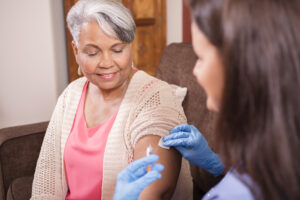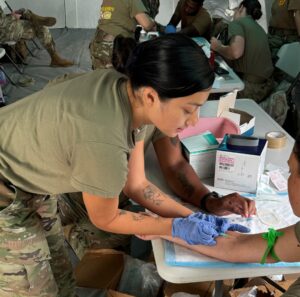Stroke is the fifth-leading cause of death in the United States, and a leading cause of serious disability for adults. For many individuals, stroke can be prevented through lifestyle choices, proper care and timely diagnosis. Knowing how to lower your risk factors is key to preventing stroke before it strikes. This Stroke Awareness Month, we’re exploring the risks associated with stroke and how you can make lifestyle changes to reduce them.
What is a stroke?
A stroke, sometimes known as a brain attack, occurs when blood flow to the brain is stopped. Your brain needs a consistent supply of blood and oxygen to function, and any interruption in blood flow can cause significant problems. There are three main forms of stroke.
Ischemic stroke
Ischemic strokes are the most common form of stroke and occur with blood vessels in the brain get blocked by fatty deposits or blood clots.
Hemorrhagic stroke
A hemorrhagic stroke occurs when a blood vessel in the brain leaks or ruptures. Hemorrhagic strokes are often caused by very high blood pressure, aneurysms, overuse of blood thinners or traumatic injuries.
Transient ischemic attack
A transient ischemic attack (TIA), sometimes known as a ministroke, occurs when there is a temporary decrease of blood flow to the brain due to a blood clot or debris in blood vessels. Unlike other forms of stroke, TIAs do not cause long-term damage.
Stroke risk factors
Although anyone can have a stroke at any age, your chances of having a stroke increases if you have certain risk factors. According to Johns Hopkins Medicine, several stroke risk factors can be changed, treated or medically managed, including:
- High blood pressure
- Heart disease
- Diabetes
- Smoking
- Use of oral contraceptives
- History of TIAs
- High red blood cell count
Unfortunately, not all risk factors can be controlled. People over the age of 55 have a higher risk of stroke, as do people of African American and Hispanic descent. Sex also plays a role – although men have a higher risk of experiencing a stroke, they are more deadly for women.
Signs and symptoms of stroke
If you are with someone that you think may be having a stroke, follow the “F.A.S.T.” acronym.
F – Face drooping
- Is one side of the person’s face drooping or numb? Is the person’s smile uneven?
A – Arm weakness
- Is one of their arms weak or numb? If they raise both arms, does one drift downward?
S – Speech difficulty
- Is their speech slurred?
T – Time to call 911
- If the answer to any of these questions is “yes”, call 911 immediately!
Individuals who are experiencing a stroke may also have trouble understanding what others are saying, develop blurred or blackened vision in one or both eyes, feel a sudden loss of coordination or notice a sudden and severe headache that may be accompanied by vomiting or altered consciousness.
Stroke prevention tips
Making healthy lifestyle choices can help reduce your risk for stroke. The Centers for Disease Control and Prevention has outlined several stroke prevention tips.
- Choose healthy food
- Foods that are low in saturated and trans fats, cholesterol and sodium will help avoid high blood pressure and high cholesterol, both of which are risk factors for stroke.
- Maintain a healthy weight
- Being overweight or obese can increase your stroke risk. While the body mass index (BMI) is not a perfect measurement system, it can be a good starting point to determine if your weight is in a healthy range. Speak to your doctor for more details about what a healthy weight is for you.
- Quit smoking
- Cigarette smoking almost doubles your risk for stroke. If you don’t smoke, don’t start. If you do smoke, quit as soon as you can.
- Restrict alcohol consumption
- Alcohol can raise blood pressure which increases your stroke risk. According to current guidelines, men should have no more than two drinks per day and women should have no more than one drink per day.
- Monitor blood pressure
- Having a blood pressure of 140/90 can damage the arteries that supply blood to the brain, so be sure to check it regularly. High blood pressure can be managed by medication, exercise and eating a healthier diet.
- Manage diabetes
- Individuals with diabetes are at higher risk for stroke than those without it. If you think you may have diabetes, get check by your doctor. If you do have diabetes, meet with your doctor and make sure you both feel your condition is well controlled. Your doctor may suggest other treatments.
- Treat heart disease
- Heart disease is the second most important risk factor for stroke, and the leading cause of death among stroke survivors. Follow your doctor’s recommendation for treating heart disease.
- Take your medicine
- If you take medications to treat conditions such as high blood pressure, high cholesterol or diabetes, always take them as instructed. Do not stop taking your medication without speaking to your doctor.
As we’ve discussed in this post, stroke is a serious and potentially life-threatening condition. Taking steps to prevent stroke can be crucial, so it’s important to recognize the risk factors and take preventative measures. This Stroke Awareness Month, let’s make sure to spread the word about stroke prevention and focus on making healthy choices that will help protect us in the long run.



